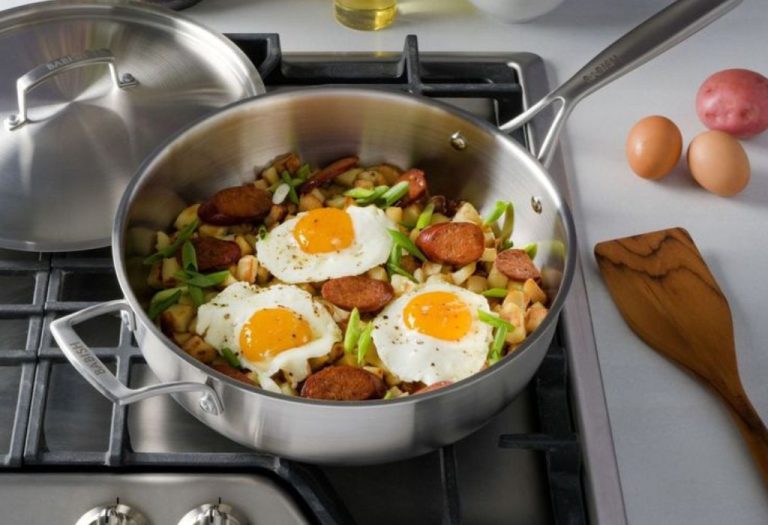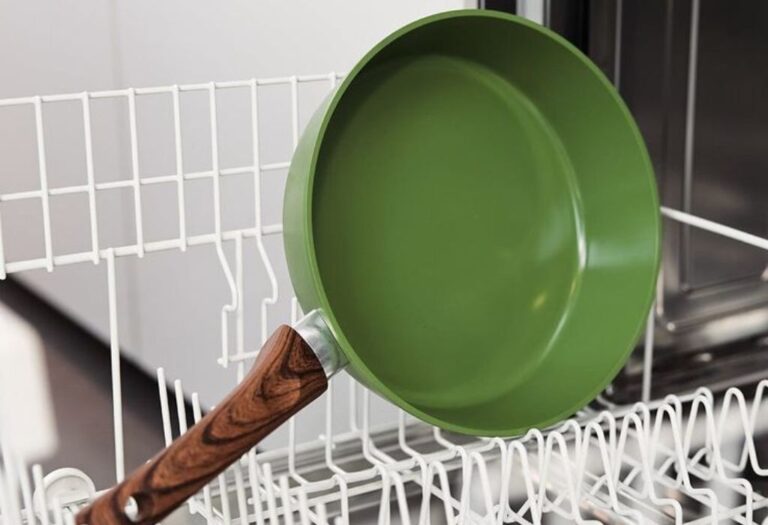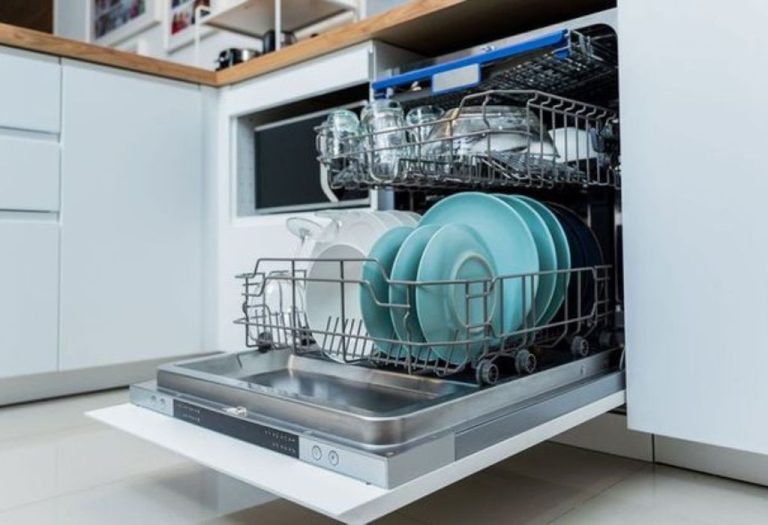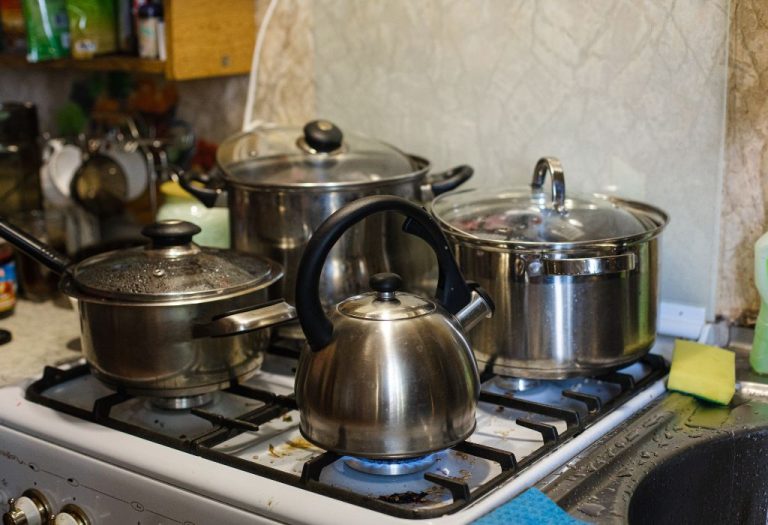Induction cooktops are transforming modern kitchens with speed, precision, and energy efficiency. Yet many home cooks pause before placing a favorite enamel-coated Dutch oven on the sleek glass surface, unsure if it will work safely or at all.
Confusion often arises because enamel is not a metal but a glass coating fused to the cookware’s surface. Since induction technology relies on magnetic metals to generate heat, the big question becomes whether enamel cookware can deliver the same performance without damaging the cooktop or the pot itself.
This uncertainty persists even as induction technology gains global momentum. Reports show Europe held nearly 33% of the induction cooktop market in 2024 as households switched to faster, more efficient cooking methods (source).
At the same time, studies confirm induction cooking is up to three times more efficient than gas and roughly 5–10% more efficient than standard electric ranges (source). With such advantages, it is no surprise that more kitchens are adopting induction systems every year.
Still, the concern remains: will enamel cookware work on induction, and if so, what precautions are needed to avoid scratches, chipping, or poor heat performance?
Can You Use Enamel Cookware on Induction? Quick Answer

Yes, you can use enamel cookware on induction if the base material is magnetic, such as cast iron or certain types of steel. The enamel itself does not heat the pan; it is only the protective glass coating fused to the metal underneath.
Induction cooking relies on an electromagnetic field that directly heats the cookware through magnetic coupling. As long as the metal beneath the enamel is ferromagnetic, the pan will heat quickly and efficiently without damaging the coating or cooktop.
However, not all enamel cookware is the same. Some low-quality or older pieces may have thin bases, uneven bottoms, or non-magnetic layers that limit induction performance. Using a simple magnet test can confirm whether the cookware is induction-compatible before cooking.
Does the enamel layer heat on induction?
No. Only the metal base interacts with the induction field.
Will any enamel pot work on induction?
Only if the base is ferromagnetic; aluminum or copper bases require a steel plate to work.
Are enameled cast iron Dutch ovens safe for induction?
Yes. Most modern brands like Le Creuset and Lodge design them for induction cooking.
Can enamel cookware damage the glass cooktop?
Not if handled properly; avoid sliding heavy pots to prevent scratches.
How can you confirm compatibility?
Place a magnet on the cookware base—if it sticks firmly, it is induction-ready.
How Induction Works—and Why Magnetism Matters
Induction cooking uses an electromagnetic field to create heat directly in the cookware instead of heating the cooktop surface first. When the cookware contains magnetic materials like cast iron or certain stainless steels, the alternating current from the induction coil excites the metal’s particles, producing rapid, even heat.
Enamel cookware relies on this metal core for induction performance. The enamel layer itself is a glass-like coating that does not interact with the electromagnetic field, serving only as a protective and decorative finish. Without a magnetic base, induction technology cannot transfer heat to the cookware.
This explains why some enamel-coated pans work perfectly while others fail to heat at all. The key factor is whether the metal under the enamel is ferromagnetic and has a flat, even bottom to maintain full contact with the induction surface.
Why does induction require magnetic metals?
The electromagnetic field needs a ferromagnetic material to create heat inside the cookware.
Does the enamel coating affect heating?
No. The magnetic base under the enamel drives the heating process.
Will copper or aluminum enamel cookware work?
Only if a layer of magnetic stainless steel or iron is added to the base.
Does cookware thickness affect performance?
Yes. Thicker bases provide better heat distribution and prevent hot spots.
Is a flat-bottomed pan essential for induction?
Yes. Full surface contact improves energy transfer and cooking efficiency.
Brand Guidance: What Manufacturers Say
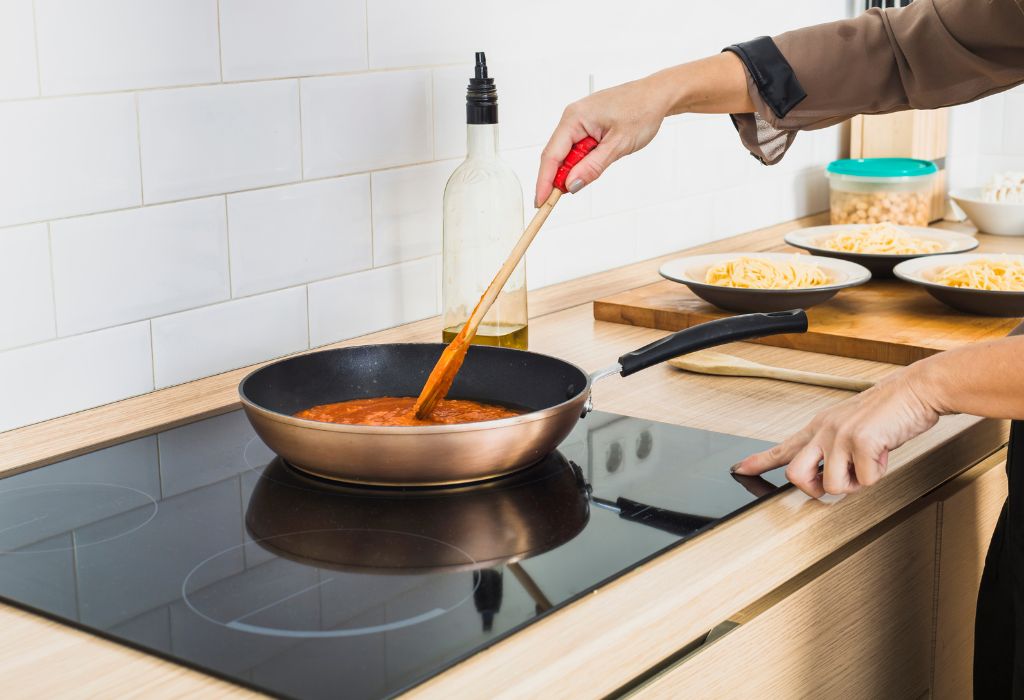
Most leading cookware brands confirm that their enameled cast iron and enamel-on-steel products are fully compatible with induction cooktops. Companies such as Le Creuset, Lodge, and Tramontina clearly state in product manuals that their enamel cookware works on all heat sources, including induction.
However, manufacturers also recommend taking precautions to protect both the cookware and the glass cooktop surface. They advise using moderate heat settings, avoiding sudden temperature changes, and lifting heavy pots instead of sliding them to prevent scratches or chips.
Some appliance manufacturers note that rough or damaged enamel bottoms may leave marks on smooth induction glass. Proper care, including keeping cookware bases clean and smooth, helps avoid these issues while maintaining efficiency and safety.
Do enamel cookware brands approve induction use?
Yes. Most major brands certify their enamel cookware as induction-compatible.
Why do some manuals warn about scratches?
Sliding heavy pots on glass cooktops can leave marks, especially with rough or chipped enamel.
Does brand reputation matter for induction safety?
Yes. Reputable brands test their products to meet modern cookware and appliance standards.
Do all enamel pieces from a brand work on induction?
Not always. Some older or decorative pieces may lack a magnetic base—check the specifications.
Are there weight restrictions for enameled cast iron?
Some induction cooktop manuals list weight limits to protect the glass surface.
Enamel Types on Induction: Cast Iron vs. Steel vs. Aluminum
Enamel cookware comes in several varieties, each with unique characteristics affecting induction performance. Enameled cast iron is the most common type, offering excellent heat retention and even cooking but with a heavier weight that requires careful handling on glass cooktops.
Enamel on steel is lighter and heats up faster but may not hold heat as long as cast iron. Its thinner base can sometimes cause hot spots if the steel quality is low. Enamel on aluminum requires a layer of magnetic stainless steel fused to the base to work on induction, as aluminum itself is not magnetic.
Understanding these differences helps users choose the right enamel cookware for both performance and durability on induction cooking surfaces.
Which enamel cookware type is best for heat retention?
Enameled cast iron provides the best heat retention and even cooking.
Does enamel on steel work on induction?
Yes, as long as the steel base is magnetic and of good quality.
Can enamel on aluminum be used on induction?
Only if it includes a bonded magnetic stainless-steel plate at the bottom.
Which enamel cookware heats up the fastest?
Enamel on steel usually heats faster than cast iron because it is thinner and lighter.
Does the cookware base thickness matter?
Yes, thicker bases prevent warping and improve cooking consistency on induction.
Set-Up & Use: Getting the Best Results
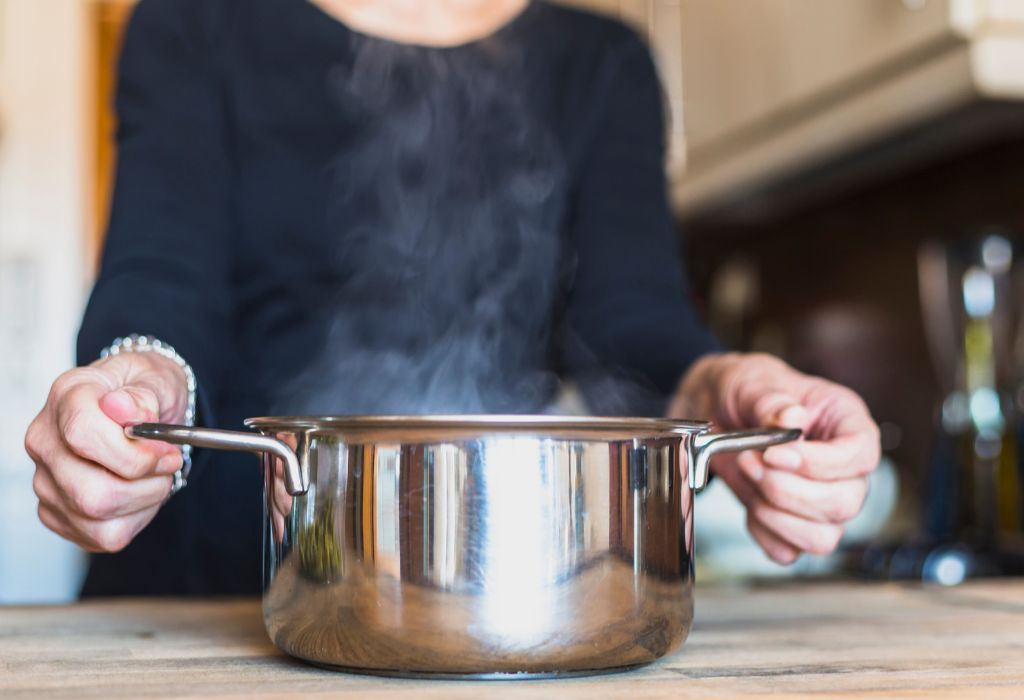
Using enamel cookware on induction requires a few simple practices to protect the cooktop surface and ensure efficient heating. Always start by matching the cookware size to the induction burner to maintain full magnetic contact and consistent heat transfer.
Preheat the cookware gradually instead of using the highest power setting immediately, especially with heavy enameled cast iron. This prevents sudden temperature changes that can stress both the enamel coating and the induction glass surface.
Keep the cookware bottom clean and smooth before placing it on the cooktop. Residue or rough spots can cause scratches or reduce heat efficiency.
Can enamel cookware handle high induction power?
Yes, but preheating gradually is better to avoid overheating and protect the enamel.
Why is burner size matching important?
Using the right size ensures even heat distribution and efficient energy use.
Can you slide enamel cookware on induction surfaces?
It is best to lift cookware instead of sliding to prevent scratches on the glass.
Do induction cooktops heat enamel cookware evenly?
Yes, when the cookware has a flat, magnetic base for full contact.
Is preheating enamel cookware necessary on induction?
Moderate preheating helps improve cooking performance and heat consistency.
Safety, Weight & Glass-Top Protection

Enameled cast iron is heavy, and improper handling can damage induction cooktops. Always set cookware down gently to prevent cracks or scratches on the glass surface.
To protect both the cookware and cooktop, avoid dragging heavy pots across the surface. Lifting cookware instead of sliding it reduces the risk of scratching and prevents the enamel from chipping under stress.
Some users place thin protective pads, like parchment paper, between the cookware and the cooktop, but this should only be done if the induction manual explicitly allows it. Excess material can trap heat and reduce cooking efficiency.
Can enamel cookware crack an induction cooktop?
Yes, if dropped or handled roughly because the glass surface is delicate.
Does cookware weight matter for induction cooking?
Yes, heavy enameled cast iron requires careful placement to avoid surface damage.
Can protective layers be used on induction cooktops?
Yes, but only if the manufacturer approves heat-resistant pads for use.
Does sliding cookware cause scratches?
Yes, sliding increases the risk of scratches on both the glass and enamel surface.
How to protect induction cooktops from marks?
Keep the cookware bottom clean, flat, and free from rough spots or debris.
Troubleshooting: When the Hob Won’t Detect Your Pot
Sometimes induction cooktops fail to recognize enamel cookware, leaving the burner inactive. This usually happens when the cookware base lacks the required magnetic properties or when the pot’s size does not match the induction zone.
Another common reason is a warped or uneven bottom that prevents full contact with the cooktop surface. Induction technology requires both a magnetic base and direct contact for efficient energy transfer.
Performing a simple magnet test helps identify whether the cookware is induction-ready. If the magnet sticks firmly to the base, the pot should work on most induction hobs when positioned correctly.
Why does my enamel pot not heat on induction?
It may lack a magnetic base or have a warped, uneven bottom.
Does the size of the cookware matter on induction?
Yes, the cookware base must meet the minimum size requirement for the burner.
What if the cookware is magnetic but still won’t work?
Check that the pot fully covers the induction element and sits flat.
Do induction cooktops have minimum power settings?
Some models require cookware of a certain size or weight to activate the heating cycle.
Can an induction interface disk help?
Yes, it allows non-magnetic cookware to work, but efficiency is reduced.
Buying Guide: Verifying Induction Compatibility
Before purchasing enamel cookware, always confirm that it is induction-compatible. Look for product specifications or labels mentioning “induction-ready,” “induction-compatible,” or displaying the standard induction coil symbol.
Performing a magnet test at home is the easiest way to verify compatibility. If the magnet sticks firmly to the bottom of the cookware, it will work on most induction cooktops.
Check for manufacturer certifications or brand reputation to ensure quality construction. Well-known brands like Le Creuset, Lodge, and Tramontina often provide detailed compatibility information on product pages and manuals.
How can you tell if enamel cookware works on induction?
Look for “induction-compatible” labeling or perform a simple magnet test.
Do all enamel cookware brands support induction?
No, only products with magnetic bases like cast iron or steel are compatible.
Are induction interface disks worth buying?
They work but reduce heating efficiency, so magnetic cookware is better.
Do product reviews help verify compatibility?
Yes, buyer feedback often mentions induction performance and heating quality.
Should you buy from reputable brands?
Yes, trusted brands follow safety standards and provide clear specifications.
Conclusion – Can You Use Enamel Cookware on Induction?
Yes, you can use enamel cookware on induction cooktops if the base is magnetic, flat, and compatible with the burner size. Most enameled cast iron and enamel-on-steel cookware works perfectly on induction surfaces when handled correctly.
To ensure safety and efficiency, verify compatibility with a magnet test, check product specifications for “induction-ready” labels, and follow best practices like gentle placement, gradual preheating, and lifting instead of sliding.
By choosing high-quality enamel cookware and following proper care guidelines, you can enjoy the benefits of fast, energy-efficient induction cooking without damaging your cookware or cooktop.
I’m Emma J. Caldwell, the founder, lead writer, and home-cooking enthusiast behind KitchenGuideCo.com. With a background in culinary arts and over a decade of cooking experience in both professional and personal kitchens, I created this platform to demystify recipes, offer smart kitchen gadget reviews, and guide readers through meal prep with confidence and clarity.

